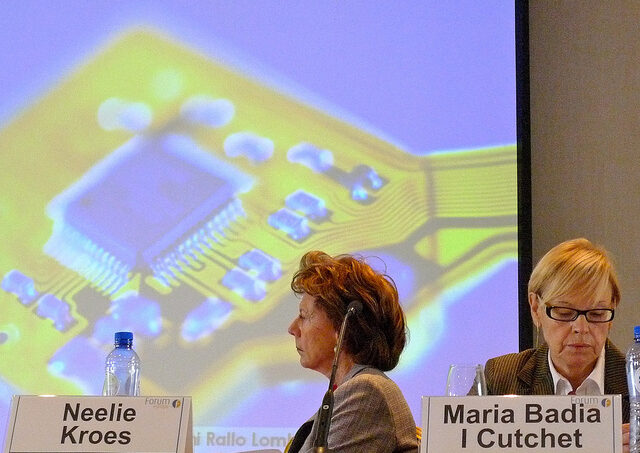
The 2nd Annual Internet of Things Europe 2010: A Roadmap for Europe, 2010. Image by Pierre Metivier.
On 17 April 2013, the US Federal Trade Commission published a call for inputs on the ‘consumer privacy and security issues posed by the growing connectivity of consumer devices, such as cars, appliances, and medical devices’, in other words, about the impact of the Internet of Things (IoT) on the everyday lives of citizens. The call is in large part one for information to establish what the current state of technology development is and how it will develop, but it also looks for views on how privacy risks should be weighed against potential societal benefits. There’s a lot that’s not very new about the IoT. Embedded computing, sensor networks and machine to machine communications have been around a long time. Mark Weiser was developing the concept of ubiquitous computing (and prototyping it) at Xerox PARC in 1990. Many of the big ideas in the IoT—smart cars, smart homes, wearable computing—are already envisaged in works such as Nicholas Negroponte’s Being Digital, which was published in 1995 before the mass popularisation of the internet itself. The term ‘Internet of Things’ has been around since at least 1999. What is new is the speed with which technological change has made these ideas implementable on a societal scale. The FTC’s interest reflects a growing awareness of the potential significance of the IoT, and the need for public debate about its adoption. As the cost and size of devices falls and network access becomes ubiquitous, it is evident that not only major industries but whole areas of consumption, public service and domestic life will be capable of being transformed. The number of connected devices is likely to grow fast in the next few years. The Organisation for Economic Co-operation and Development (OECD) estimates that while a family with two teenagers may have 10 devices connected to the internet, in 2022 this may well grow to 50 or more. Across the OECD area the number of…
